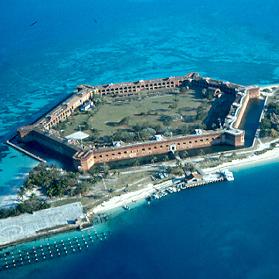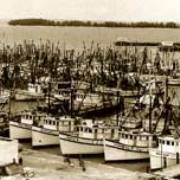|
 The history of Key West goes back much farther than the first European visitors to the island. Amongst the first documented settlers of Key West were the Calusa. The Calusa were members of the Caloosahatchee culture. This Native American group was prevalent in the Keys and along the southern coasts of Florida. The Calusa were here, amongst the thicket of mangroves, when Ponce de Leon sailed past in 1513. Ponce later visited the island in 1521 before dying from a poison arrow of the native tribes in the Florida region. The history of Key West goes back much farther than the first European visitors to the island. Amongst the first documented settlers of Key West were the Calusa. The Calusa were members of the Caloosahatchee culture. This Native American group was prevalent in the Keys and along the southern coasts of Florida. The Calusa were here, amongst the thicket of mangroves, when Ponce de Leon sailed past in 1513. Ponce later visited the island in 1521 before dying from a poison arrow of the native tribes in the Florida region.
After this, Key West fell into Spanish hands in the 17 century, and the island was known as Cayo Hueso, which translates to mean Bone Key. The reason for this name is based partly on a legend. As native tribes fought for control of mainland Florida, the Calusa were forced southward, onto the island of Key West in large numbers. It was here the natives fought several bloody battles and their bones littered the beaches. From here, the Calusa fled to Cuba.
The European settlers had run the indigenous people from the island. At this time, the island was used for fishing and salvaging. It also had a small garrison. The name was eventually changed to Key West. The explanation for this is because the Spanish word Hueso sounds similar to the world west. At one point in 1763, England took possession of the island for twenty years. It was at this time that any remaining natives and Spaniards were forced to head to nearby Havana, Cuba. However, once the Revolutionary War was over, the island was returned to the control of Spain.
In 1815, the land was given to a Spanish settler in St. Augustine, who received the deed from Spain for Key West. However, four years later, the entire state of Florida was ceded to the United States minus the island, which was still in private hands. The island was sold to an American businessman for $2000 around this time, and he divided the island into four parts, selling the three other sections to three other businessmen.
 This businessman, John Simonton, convinced the U.S. Navy that the island would be an excellent base. The Navy had sent Lt. Matthew C. Perry to investigate the island. Pleased with what he saw, Perry claimed the island for the United States, and the government took control. It was at this time that Key West became a port of entry for immigrants to the United States. U.S. customs set up an office on the island, and travel to the port increased as people swarmed to the island desperately seeking solace from other nations across the world. This businessman, John Simonton, convinced the U.S. Navy that the island would be an excellent base. The Navy had sent Lt. Matthew C. Perry to investigate the island. Pleased with what he saw, Perry claimed the island for the United States, and the government took control. It was at this time that Key West became a port of entry for immigrants to the United States. U.S. customs set up an office on the island, and travel to the port increased as people swarmed to the island desperately seeking solace from other nations across the world.
Key West soon became a port for cargo travelling from various spots in the Caribbean, particularly Cuba. The naval base was established on the island, and it was the commanders of the Navy, such as Captain Porter, who were sent to protect the island from Pirates and other desperados. Porter ruled the island with an iron fist and eventually became a military dictator over Key West, running it with his own idea of martial law.
After the rule of Porter, Key West became a major island for wrecks and salvaging. The treacherous waters around the island and the many, strategically located reefs made this a booming business. The economy of Key West was thriving and its citizens were quite wealthy as a result. Other booming businesses were the fishing industry, turtling, sponging, and salt production. In fact, the United States’ primary salt developer prior to the Civil War was the island. Despite the war, Key West continued to prosper, and by the time prohibition hit in the 1920’s, a new, dangerous business had become popular on the island. This business involved smuggling alcohol such as beer and rum from Cuba and importing it into the United States. This made way for marijuana smuggling in the 1960’s and despite crackdowns, many Key West businessmen made their fortunes off these dangerous and illegal business opportunities.
Today, Key West thrives on another industry, tourism. That has been one of the top industries since the first Spanish settlers took over the island. With so many beautiful things to see including the brightly colored foliage, sparkling white sands, and crystalline waters, those from around the world have flocked to this unique, history-filled island seeking peace and relaxation.
|